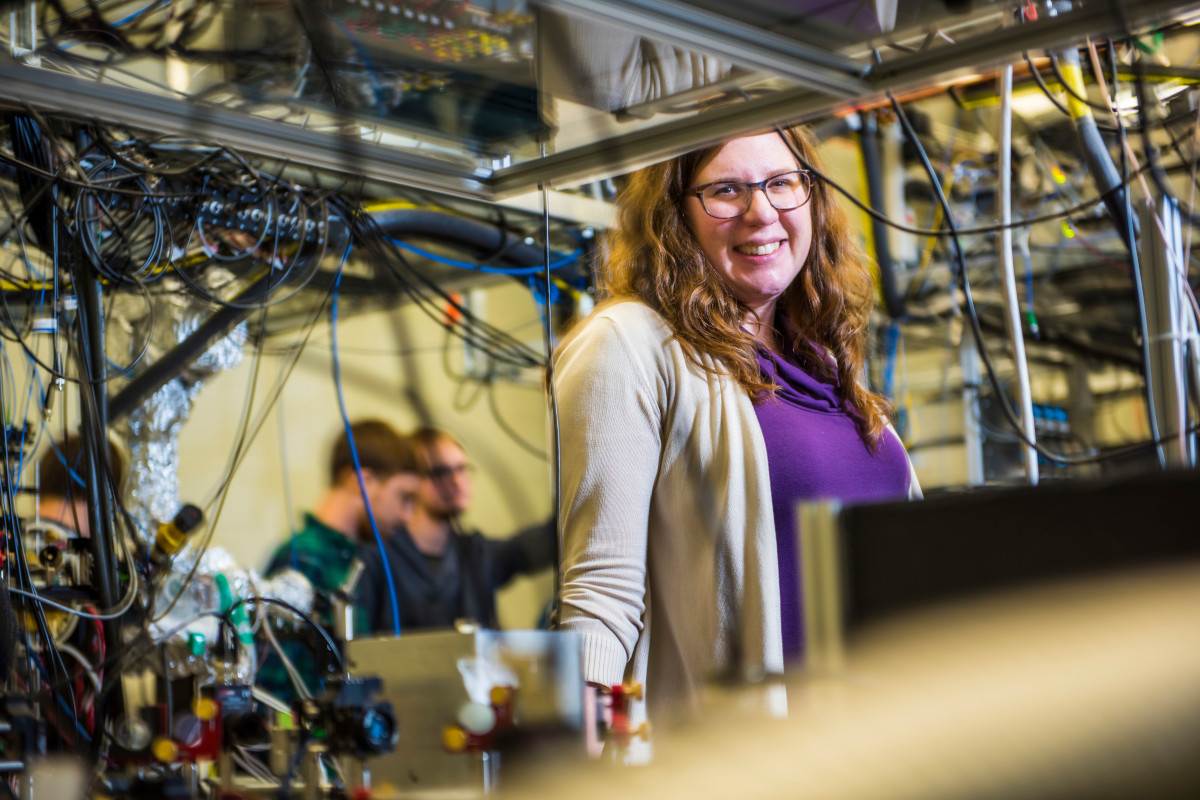Transforming information from microwaves to optical light
Katie Willis - 22 July 2020

Lindsay LeBlanc, associate professor in the Department of Physics and Canada Research Chair in Ultracold Gases for Quantum Simulation. Photo credit: John Ulan.
A newly developed tool can translate data from microwaves to optical light, according to a new study by University of Alberta physicists.
Bridging the gap from cutting-edge quantum signals to light has promising applications in the field of quantum computing and communication technology, allowing it to be harnessed for fibre-optic communications.
“Many quantum computer technologies work in the microwave regime, while many quantum communications channels, such as fibre and satellite, work with optical light,” explained Lindsay LeBlanc, associate professor in the Department of Physics and Canada Research Chair in Ultracold Gases for Quantum Simulation. “We hope that this platform can be used in the future to transduce quantum signals between these two regimes.”
LeBlanc and her lab, including graduate student Andrei Tretiakov and undergraduate student Timothy Lee, worked closely with John P. Davis, associate professor of physics, and his research group, including graduate student Clinton Potts, to develop the technology.
The tool introduces a strong interaction between microwave radiation and atomic gas. The microwaves are then modulated with an audio signal, encoding information into the microwave. This modulation is passed through the atoms, which are then probed with optical light to encode the signal into this light.
“This transfer of information from the microwave domain to the optical domain is the key result,” added LeBlanc. “The wavelengths of these two carrier signals differ by a factor of 50,000—it is not easy to transduce the signal between these regimes, but this transfer proves this is possible..”
Both LeBlanc and Davis are part of the Quanta program, a NSERC CREATE program designed to train graduate students in emerging quantum technologies. QUANTA graduates will be prepared to create and advance quantum technology companies, ensuring Canada's central role in leading the quantum age.
“This idea arose by having talks and meeting within the Quanta group—and it turned out to work as well or better than we first expected,” said LeBlanc. “This sort of discovery-led research can be very fruitful, and lead us to new possibilities.”
Funding for this project was provided by Alberta Innovates.
The paper, “Atomic microwave-to-optical signal transduction via magnetic-field coupling in a resonant microwave cavity,” was published in Applied Physics Letters(doi: 10.1063/1.5144616).